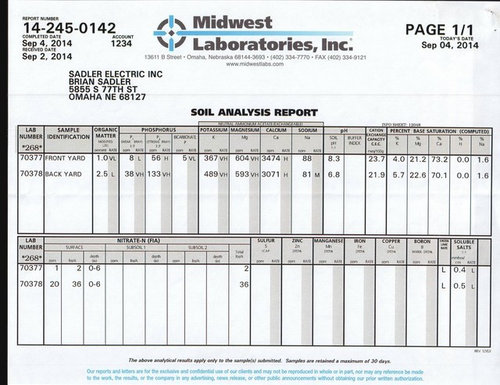Lawn Renovation Help
bsadler
9 years ago
Related Stories

HOUZZ TOURSMy Houzz: 38 Years of Renovations Help Artists Live Their Dream
Twin art studios. Space for every book and model ship. After four decades of remodeling, this farmhouse has two happy homeowners
Full Story
SELLING YOUR HOUSE10 Low-Cost Tweaks to Help Your Home Sell
Put these inexpensive but invaluable fixes on your to-do list before you put your home on the market
Full Story
STANDARD MEASUREMENTSThe Right Dimensions for Your Porch
Depth, width, proportion and detailing all contribute to the comfort and functionality of this transitional space
Full Story
ARCHITECTUREHouse-Hunting Help: If You Could Pick Your Home Style ...
Love an open layout? Steer clear of Victorians. Hate stairs? Sidle up to a ranch. Whatever home you're looking for, this guide can help
Full Story
SELLING YOUR HOUSEHelp for Selling Your Home Faster — and Maybe for More
Prep your home properly before you put it on the market. Learn what tasks are worth the money and the best pros for the jobs
Full Story
DECLUTTERINGDownsizing Help: How to Get Rid of Your Extra Stuff
Sell, consign, donate? We walk you through the options so you can sail through scaling down
Full Story
GARDENING GUIDES8 Unthirsty Plants Help You Save Water in Style
Spend less effort and money on your landscape with drought-tolerant and native plants that liven up your yard
Full Story
LANDSCAPE DESIGNGet Along With Less Lawn — Ideas to Save Water and Effort
Ditch the mower and lower your water bill while creating a feast for the eyes with diverse plantings and gathering places
Full Story
GARDENING GUIDESSmall Gem Lawns: More Impact From Less Grass
Instead of letting the lawn sprawl, make it a shapely design element in your yard. You’ll reap benefits both practical and aesthetic
Full Story









bsadlerOriginal Author
bsadlerOriginal Author
Related Professionals
Surprise Landscape Architects & Landscape Designers · Jennings Landscape Architects & Landscape Designers · Zion Landscape Architects & Landscape Designers · Dallas Landscape Contractors · Fort Mill Landscape Contractors · Galveston Landscape Contractors · Nutley Landscape Contractors · Snoqualmie Landscape Contractors · Tavares Landscape Contractors · West Allis Landscape Contractors · Shenandoah Landscape Contractors · Palos Verdes Estates Swimming Pool Builders · Rockwall Swimming Pool Builders · San Juan Capistrano Swimming Pool Builders · West Palm Beach Swimming Pool Buildersmorpheuspa (6B/7A, E. PA)
dchall_san_antonio